Special Report
The 35 Most Popular Craft Breweries in America
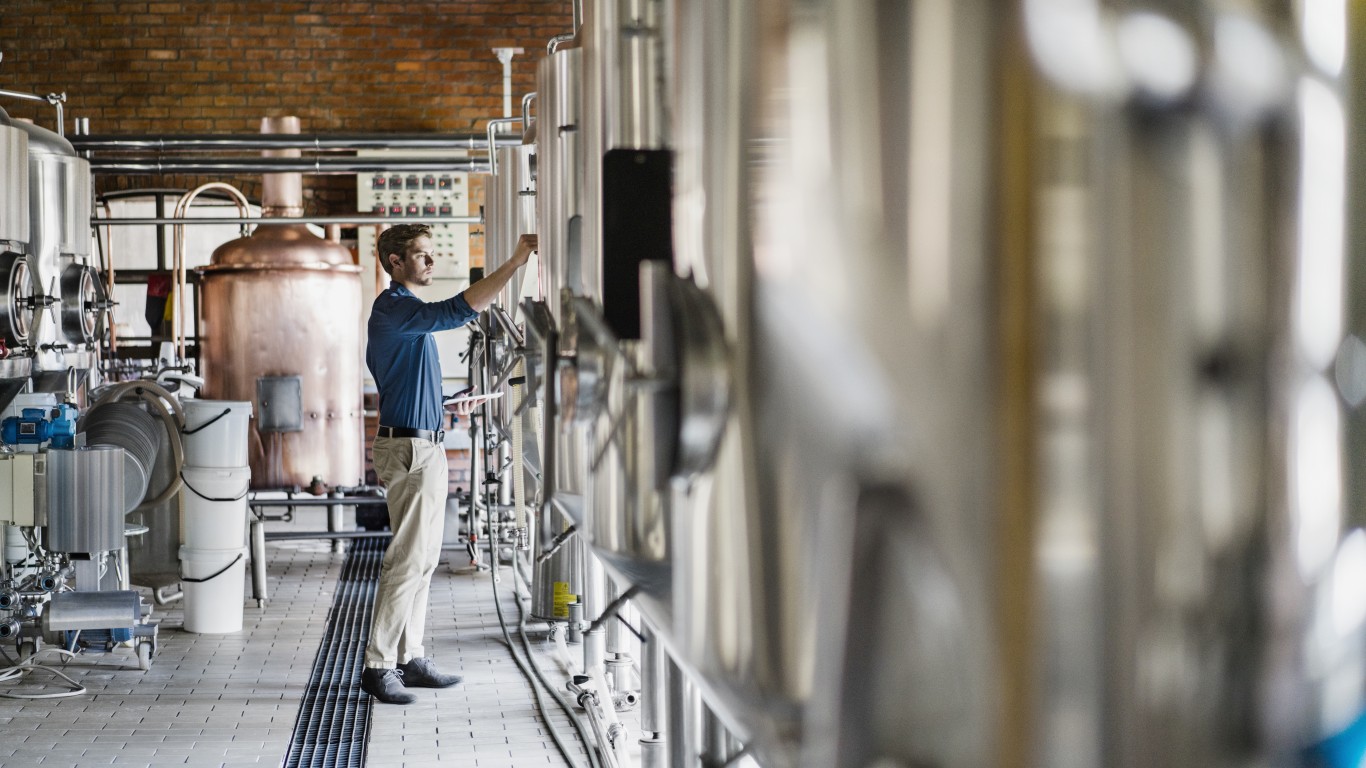
Published:
Last Updated:

When the first colonists arrived in New England in the early 17th century, they started brewing beer — not making wine. Wine grapes didn’t grow well in the Northeast, and, anyway, the colonists came from England, where beer was the principal tipple.
Ever since then, and despite the increasing popularity of wine — and recently of hard seltzer — we’ve been a nation of beer drinkers. According to a Gallup poll released last summer, some 38% of Americans — and 55% of men — who drink alcohol prefer beer to wine or liquor. (You might be surprised to learn how much beer the average person drank in every state.)
Most of what we drink is mass-produced, primarily by brands owned by one of two companies — Anheuser-Busch InBev and MillerCoors. More than 29 million barrels of Anheuser-Busch’s Bud Light — America’s best-selling beer — alone were shipped in 2018. In comparison, the total shipped by all of the country’s estimated 7,500-plus craft breweries combined amounts to 25.9 million barrels.
That may be a fraction of what the big boys sell, but it represents an impressive growth for craft beer from the mere 9.1 million barrels shipped in 2009. As Forbes put it last year, “the craft beer revolution is still going strong.” The craft brewing industry’s market share reached 13.2% in 2018, and sales grew 7% over 2017, to $27.6 billion. And craft breweries are a nationwide phenomenon: The industry group Brewers Association reports that a majority of Americans live within 10 miles of a craft brewer.
The homeowner advice and review site House Method recently crunched the numbers to determine the most popular craft breweries in America, both overall and state-by-state. (Brewers Association defines a craft brewery as one producing no more than 6 million barrels a year and is independent in the sense that no more than 25% is owned or controlled by a beverage alcohol company that is not itself a craft brewer.) A number of these are responsible for some of the 40 most delicious beers in America.
Click here for the 35 most popular craft breweries in America.
This list of the 35 most popular American breweries, as computed by House Method, shows a wide geographical spread, with representatives stretching from Oregon to Florida and from Maine to California. California, however, is the clear winner here, with 11 breweries out of 35 — and the western states hold a slight majority overall, with 19 of the 35. (One facility, the Ballast Point brewery in Daleville, Virginia — originally listed at No. 13 — is no longer operating in its original form.)
Wherever they’re located, though, and whether or not their beers are available nationally or only locally, all these breweries have earned an avid following for their first-rate brews.
To determine America’s most popular breweries, House Method considered four factors: number of Facebook followers, number of Instagram followers, Yelp score, and number of Yelp reviews.

35. Firestone Walker Brewing Co.
> Location: Buellton, California
This operation was founded in the California Central Coast town of Paso Robles 1996 by David Walker and his brother-in-law, Adam Firestone — great-great-grandson of the founder of the Firestone Tire and Rubber Company. While the original facility (see No. 15) produces a wide range of beers, this Buellton location, styled the Barrelworks, specializes in what the brewery calls “eccentric wild ales” — for instance Violet Underground, flavored with raspberries and candied violet petals, and El Gourdo, a wild roasted pumpkin ale. Belgium’s Duvel Moortgat company now owns the company (it also owns Kansas City’s Boulevard Brewing Co.; see No. 28).
34. Saint Arnold Brewing Company
> Location: Houston, Texas
Shipping its first keg in 1994, Saint Arnold claims to be the oldest craft brewery in Texas. When they launched their business, founders Brock Wagner and Kevin Bartol chose Houston, they said, because it was then the largest city in America without a microbrewery. Their range of beers includes several hoppy IPAs and lagers, such seasonal choices as a crisp Summer Pils and a hearty Imperial pumpkin stout called Pumpkinator, and a chocolate milk stout called Icon Blue.
[in-text-ad]
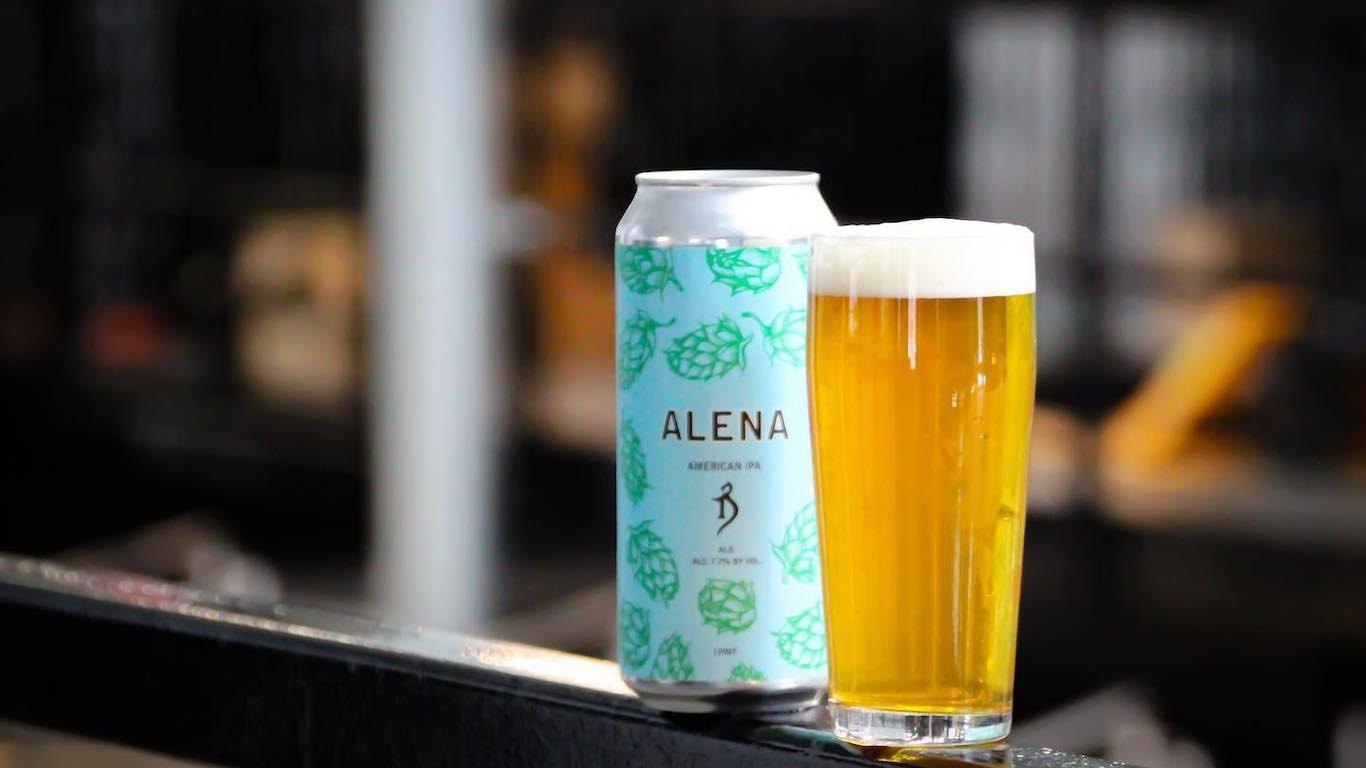
33. The Alchemist
> Location: Stowe, Vermont
The Alchemist began as a brew pub in the village of Waterbury. This evolved into the Alchemist Cannery, which quickly gained famed for its Heady Topper IPA. That offering is still made in Waterbury, but the brewery’s main facility, complete with visitor’s center, is now in Stowe.
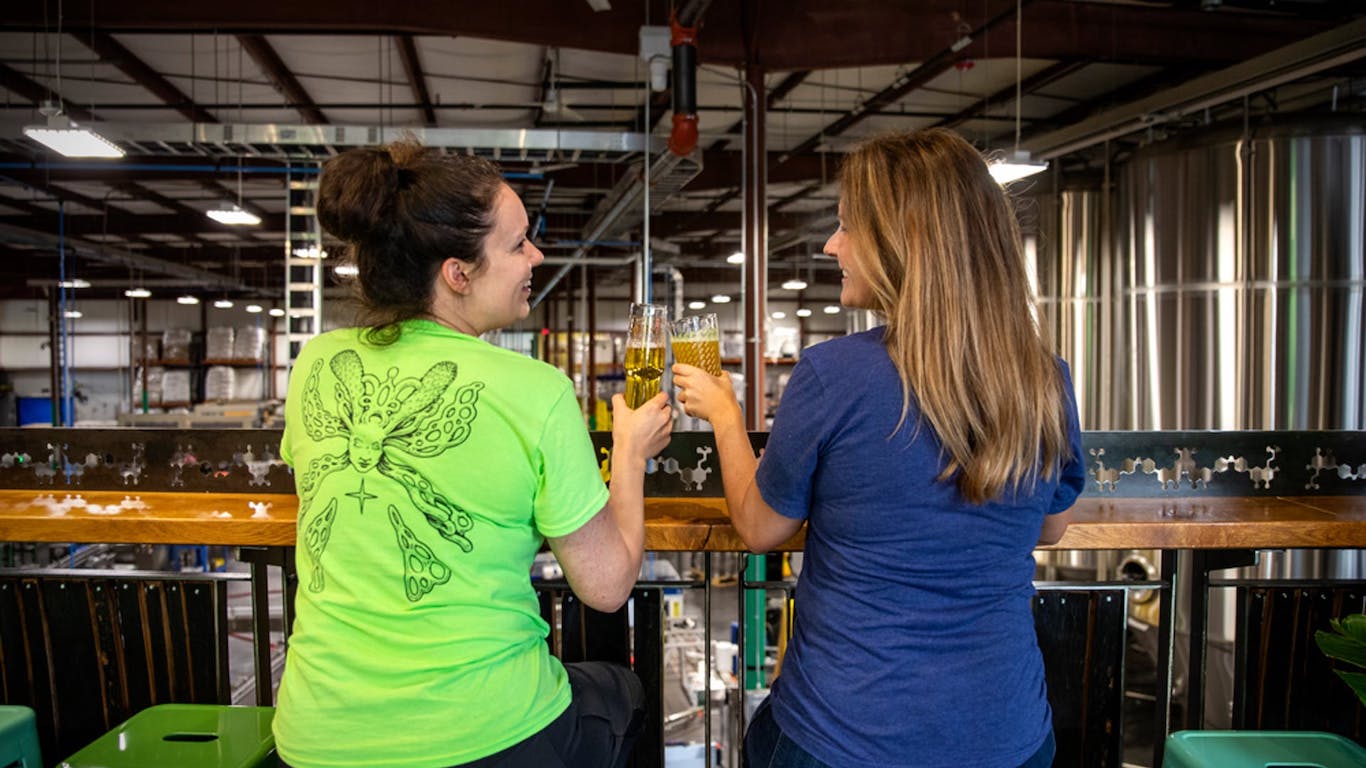
32. Wicked Weed Brewing
> Location: Asheville, North Carolina
Owned by two families, Wicked Weed started as a brewpub in 2012, and now produces 25 different craft beers, including West Coast-style IPAs and barrel-aged sour ales. Featured beers currently include Hop Cocoa, a porter brewed with cocoa nibs, and an IPA called Pernicious.

31. Sleepy Dog Brewing
> Location: Tempe, Arizona
With brews like Wet Snout Peanut Butter Stout and Feisty Chihuahua Mexican Lager, Sleepy Dog has been devoted, over its nine-plus years of existence, to “Man’s two best friends” — i.e., beer and canines. It participates in dog adoption programs and teams with “local animal shelters and organizations to help bring beer lovers and dogs together.” Chicago’s Two Brothers Brewing Company bought Sleepy Dog in 2017, and the beer is now available in Illinois as well as Arizona.
[in-text-ad-2]
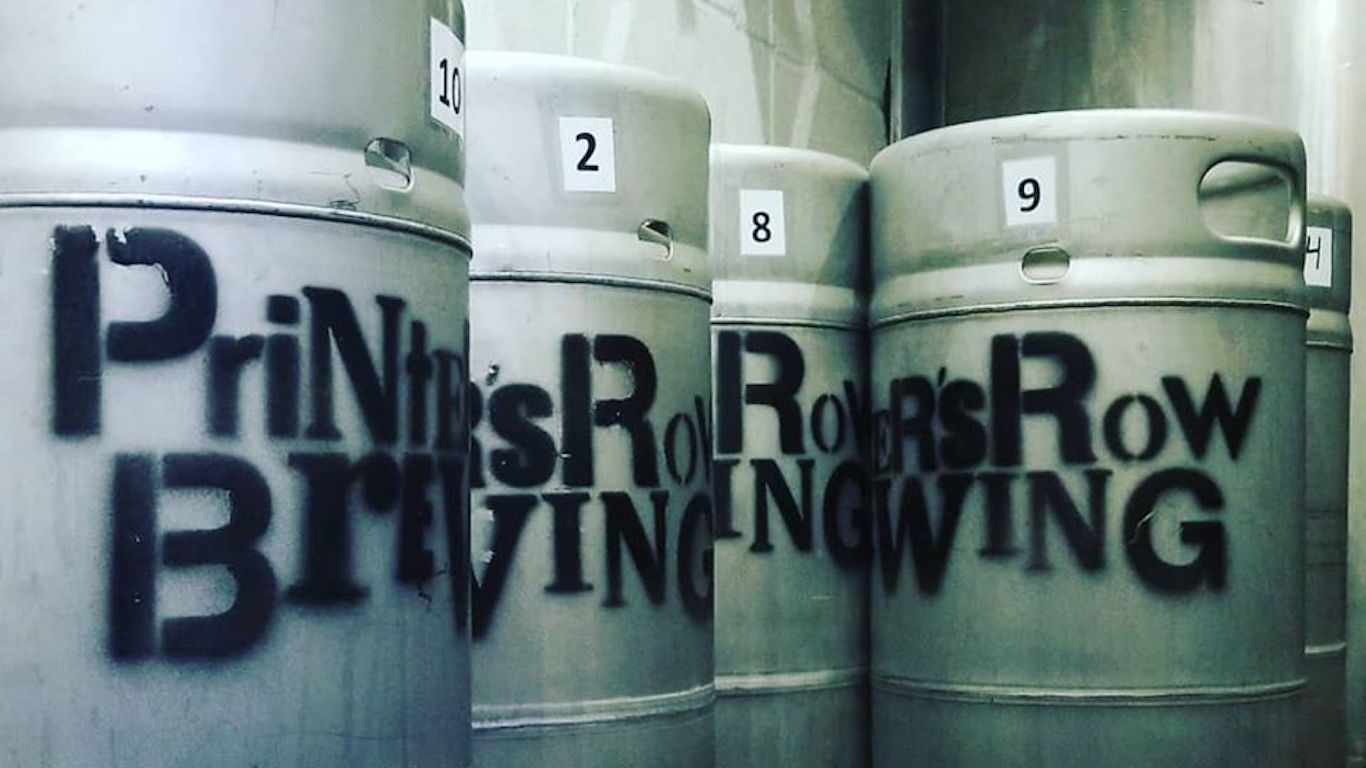
30. Printer’s Row Brewing
> Location: Chicago, Illinois
Launched in 2016 in Chicago’s historic Printer’s Row neighborhood, this operation describes itself as “another great, quality craft beer in the Chicago landscape of ever-growing micro breweries.” Its catalogue includes a porter called Cannonball and an American blonde ale called Bookbinder.
29. Spoetzl Brewery
> Location: Shiner, Texas
Generations of beer-lovers, Texan and otherwise, have enjoyed Shiner Bock and other specialties from this historic brewery, established in 1909 in the town of Shiner, southeast of Austin. Shiner Bock was introduced in 1913, and two years later, German master brewer Kosmos Spoetzl bought the facility, giving it his name.
[in-text-ad]
28. Boulevard Brewing Co.
> Location: Kansas City, Missouri
The first Boulevard Pale Ale rolled out of what was originally a 35-barrel brewhouse in 1989. Since then, the brewery has grown exponentially. In 2013, Belgium’s Duvel Moortgat company, whose famous Duvel beer was an early inspiration to Boulevard founder John McDonald, bought the company. Today, the brewery’s headquarters includes a Tours & Rec Center, complete with a deck offering tabletop shuffleboard.

27. The Bruery
> Location: Anaheim, California
The Bruery, a boutique craft brewery focused on barrel-aged and experimental ales, was founded by one-time law student and home brewer Patrick Rue (hence “Bruery”) in 2008. Among the beers in Rue’s repertoire are Goses Are Red (a rosé version of the German-style sour ale type called gose) and Ruekeller Helles (Helles is a kind of malty German lager).

26. Funky Buddha Brewery
> Location: Oakland Park, Florida
Originally a tea and hookah bar that evolved into a craft beer lounge and one-barrel brewhouse, Funky Buddha opened a new full-scale brewery facility in 2013 near the Fort Lauderdale Hollywood International Airport. Its range of beers includes Hop Gun IPA, Vibin’ Groovable Lager, and Manhattan Double Rye Ale.
[in-text-ad-2]
25. Deschutes Brewery
> Location: Bend, Oregon
A brewery with a nearby “public house” that has been a fixture in Bend since 1988, Deschutes has a social conscience. It announces on its website that “We are committed to the craft beer industry and our community by honoring our mission [t]o profitably deliver the world’s finest adult beverages and cultivate extraordinary experiences.” Those adult beverages include Lil’ Squeezy Juicy Ale, Fresh Haze IPA, and a seasonal Tangelo and Cardamom Sour Ale.

24. Oskar Blues Brewery (North Carolina)
> Location: Brevard, North Carolina
Oskar Blues has three brewery/taproom locations, in Austin, Texas, and Longmont, Colorado, as well as this one in North Carolina. (There’s also a taproom/restaurant in Boulder, Colorado.) A “wee heavy” Scotch ale called Old Chub, an American Imperial red ale dubbed G’Knight, and a German-style pilsner known as Mama’s Little Yella Pils are some of its beers.
[in-text-ad]
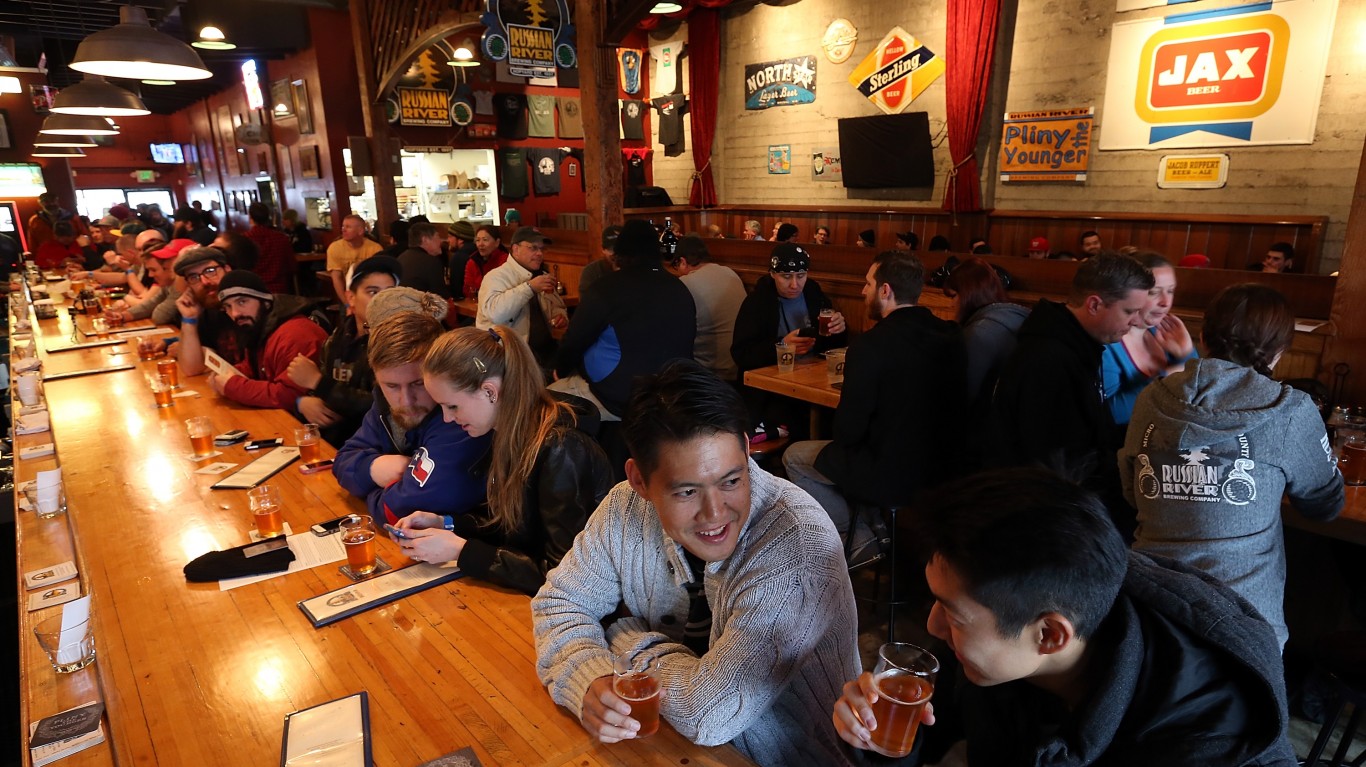
23. Russian River Brewing Co.
> Location: Santa Rosa, California
Russian River is a brewery born out of a winery, founded by Sonoma County’s Korbel Champagne Cellars in 1997. One of its best-known beers, Pliny the Elder, was one of America’s first Imperial IPAs. Among its many other offerings is a Triple IPA — meaning that’s it’s particularly high in alcohol with lots of hops — called Pliny the Younger. The brewery recently opened a second location in Windsor, just up Highway 101 from Santa Rosa.
22. Left Hand Brewing Co.
> Location: Longmont, Colorado
“Damn Good Beer Because of Damn Good People” is this nearly 27-year-old brewery’s motto. In addition to producing such brews as Nitro Milk Stout and Death Disco Porter, Left Hand runs a foundation supporting community, cultural, and medical projects; an employee-based group raising money to combat multiple sclerosis; and an initiative called Ales4FemAles, dedicated to “empowering and educating women in the world of craft beer.”
21. Green Flash Brewing Co.
> Location: San Diego, California
Established in 2002, this brewery draws on recipe ideas from employees to create a range of small-batch beers, sold in cans. West Coast IPA, Baja Bound Lager, and Beter — an organic wheat ale brewed with açaà berries and black tea — are some of the results.
[in-text-ad-2]

20. Four Peaks Brewing Co.
> Location: Tempe, Arizona
Four Peaks opened as a brewpub in 1997 in a 19th-century ice house that later became a creamery and then a recording studio. Today, it operates a brewery in the space, as well as a second brewery nearby and pubs in Scottsdale and Phoenix’s Sky Harbor Airport, and is owned nationwide by Anheuser-Busch. Its flagship brew is Kilt Lifter, a full-bodied Scottish-style ale.
19. Allagash Brewing Co.
> Location: Portland, Maine
Specializing in Belgian-style beers, Allagash opened in 1995, initially producing only a single brew, a wheat beer called Allagash White, flavored with coriander and orange peel. In 2007, the brewery made beer history by producing the first lambic — a spontaneously fermented Belgian ale — on American soil, Coolship Resurgam.
[in-text-ad]
18. Harpoon Brewery (Massachusetts)
> Location: Boston, Massachusetts
Boston’s Harpoon Brewery (there’s also a branch in Windsor, Vermont, purchased in 2000) received the Commonwealth of Massachusetts Brewing Permit #001 in 1986, and a few years later released New England’s first seasonal craft beer — Harpoon Winter Warmer, flavored with cinnamon and nutmeg. Employee-owned today, Harpoon makes everything from a straightforward IPA to a coffee porter co-branded with Dunkin’.

17. Cigar City Brewing Co.
> Location: Tampa, Florida
Long a major producer of cigars, Tampa’s nickname is Cigar City, and the first beer released by the brewery that borrowed that sobriquet when it opened in 2007 was called Maduro Brown Ale — “maduro” being a type of cigar with mature dark-brown leaves. It’s still produced, but so are such non-tobacco-related beers as Cubano Espresso, Florida Man (a double IPA), and a barleywine-style ale aged in whiskey barrels and flavored with cherries and vanilla that goes by the name of Excessive and Lustful Kissing.
16. Bell’s Brewery
> Location: Kalamazoo, Michigan
Larry Bell opened a home brewers’ supply store in Kalamazoo in 1983, and produced his own initial commercial beer — brewed in a 15-gallon soup pot — two years later. The first version of what was to become an iconic Bell’s beer, Two Hearted Ale (made with Wisconsin hops and English malt) appeared in 1997. Today, the main Bell’s brewery is in Comstock, near Kalamazoo, but the original location remains, as the Bell’s website puts it, “a home to innovation.”
[in-text-ad-2]
15. Firestone Walker Brewing Co.
> Location: Paso Robles, California
This operation founded in 1996 by David Walker and his brother-in-law, Adam Firestone (of the Firestone tire family) makes a variety of beers, including a number of IPAs, along with such specialties as Rosalie (a beer brewed with hibiscus and wine grapes) and a “cocktail inspired” blended ale called Old Man Hattan. Firestone Walker has two other California locations — a “Barrelworks” in Buellton (see No. 35) and what it calls its Propagator, a restaurant/lounge plus taproom and barrel cellar, in Venice. Like Kansas City’s Boulevard Brewing Co. (see No. 28), Firestone Walker is now owned by Belgium’s Duvel Moortgat company.
14. Rogue Ales Brewery
> Location: Newport, Oregon
The original Rogue Public House in Ashland, opened in 1988, was lost to flooding. A second location, in Newport, southwest of Salem on the Oregon coast, became Rogue headquarters, and today there are also facilities in Portland, Astoria, Independence, and the Washington town of Issaquah. Rogue produces a variety of ales and lagers, as well as a line of distilled spirits and a few canned cocktails.
[in-text-ad]
13. Stone Brewing Co.
> Location: Escondido, California
Two beer-lovers who met in the music business in L.A. collaborated on Stone Brewing Co., opening in 1996. Stone Pale Ale was their first beer. That’s still made, but has been joined by a number of other IPAs, including a number of special releases available only once a year, or for one year only.

12. Binary Brewing Co.
> Location: Portland, Oregon
“Good beer is like software — in the end it’s binary,” reads the motto of this brewery operating out of Portland’s Uptown Beer Co. taproom and bottle shop. Binary produces a number of seasonal and year-round IPAs, pale ales, etc., — many with computer-related names, like CTRL-ALT-DEL Irish Stout and Hack the Planet Pale Ale.
[in-text-ad-2]
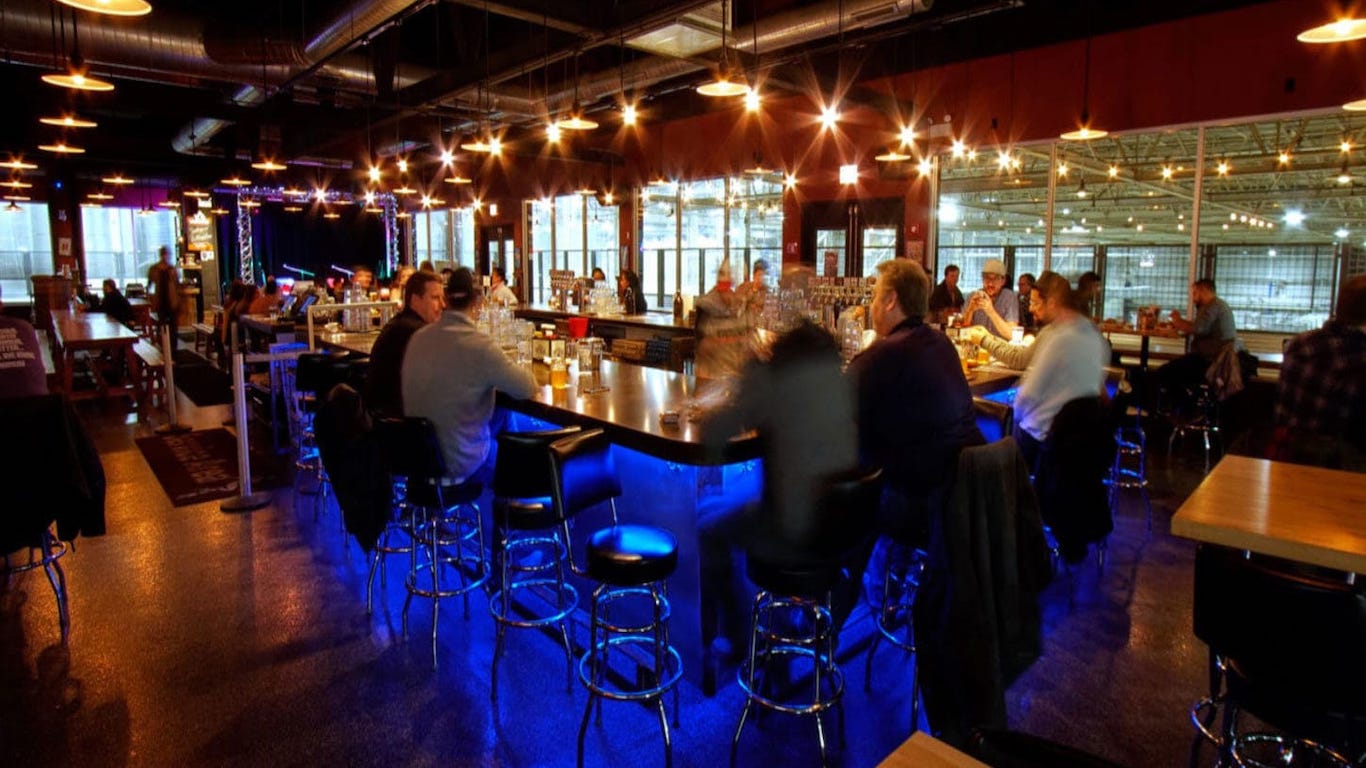
11. Lagunitas Brewing Co. (Illinois)
> Location: Chicago, Illinois
Originally founded in Northern California in the mid-1990s and still based there (see No. 6), Lagunitas also has brewpubs in Seattle and the Southern California city of Azusa. In 2014, the company opened a 300,000-square-foot second brewery, in Chicago. Lagunitas IPA leads the product lineup.
10. Anchor Brewing Co.
> Location: San Francisco, California
Anchor traces its origins to a brewery established by a German immigrant named Gottlieb Brekle in 1871, but the first bottled Anchor Steam Beer didn’t appear until a century later. The beer selection expanded over the years to include such landmarks as Anchor Summer Wheat, the first American wheat beer since Prohibition, and a one-time-only beer called Ninkasi — an attempt to reproduce a 4,000-year-old Sumerian beer.
[in-text-ad]

9. Hodad’s Brewing Co.
> Location: San Diego, California
Hodad’s is a brand extension of the small local burger chain of the same name, which dates from 1969. (“Hodad” is old surfer slang for a surfer wannabe.) The brewery supplies craft beers to the restaurants, including five seasonal locations inside Petco Park, home field for the San Diego Padres. The beers include Tablista (a Mexican-style lager called Tavlista), Boss Brew Kölsch (a German-inspired golden pale ale), and Hodaddy Hefeweizen (an unfiltered wheat beer).
8. Lewis & Clark Brewing Co.
> Location: Helena, Montana
Home brewer Max Pigman bought Helena’s Sleeping Giant Brewing Company in 2001, changing the name to honor 19th-century explorers Meriwether Lewis and William Clark four years later. He operated the brewery and a taproom at the original location for about nine years before moving into an old paint factory and expanding his brewing operations. Beers honor the history and landscape of the region, with names like Mt. Edith Barleywine, Meriwether IPA, and Yellowstone Golden Ale.

7. Ballast Point Brewing Co. (California)
> Location: San Diego, California
Started by a group of San Diego home brewers in 1996, Ballast Point subsequently opened three tasting rooms in its home city, as well as one each in Anaheim and Long Beach, California, and another in Chicago. After it was purchased by the massive Constellation Brands, an additional tasting room and brewery were established in Virginia, but that is now closed. Constellation subsequently sold Ballast Point to Kings & Convicts, a small Illinois craft brewer.
[in-text-ad-2]

6. Lagunitas Brewing Co. (California)
> Location: Petaluma, California
This brewery’s founder, Tony Magee, started making beer with a stovetop homebrew kit in Northern California in 1993. His early efforts, he admits, “ranged from vile and repugnant, to delicate and exceptional.” As his enterprise grew, he moved first to an old storage shed, then to a full-scale brewery, later opening a second brewery in Chicago (see No. 11) and brewpubs in Seattle and Azusa (near Los Angeles). In addition to the well-known Lagunitas IPA, offerings include everything from a low-cal, low-carb IPA called DayTime to Cherry Jane Sour Ale, brewed with Turkish delight cherry juice.
5. Dogfish Head Craft Brewery
> Location: Milton, Delaware
In 1995, Sam Calagione opened Dogfish Head Brewings & Eats, a brewpub and restaurant with, in Delaware’s Rehoboth Beach. Brewing operations expanded, and the main brewery moved inland to Milton. Here, Dogfish Head became one of the early proponents of so-called extreme beer, generally higher in alcohol than ordinary brews and flavored with unusual ingredients — for instance, its Bourbon Barrel-Aged Fruit-Full Fort, made with four kinds of fresh berries and boasting a 17% ABV. Now the nation’s 13th-largest craft beer producer by sales volume, Dogfish Head merged last year with the Boston Beer Co. (see No. 2), though the operations remain separate.
[in-text-ad]
4. Sierra Nevada Brewing Co.
> Location: Chico, California
Sierra Nevada, which was born in 1980, is one of the largest craft producers in America — due in part to the fact that the California original expanded with a brewery in Mills River, North Carolina, in 2015. Sierra Nevada Pale Ale is the concern’s best-known brew, but the extensive range includes Kellerweis (a Bavarian-style wheat beer), Hop Bullet (a double IPA), and Narwahl (an Imperial stout) — and after 2018’s Camp Fire destroyed much of Butte County, Sierra Nevada’s California home, they release a fundraising Resilience Butte County Proud IPA.
3. Goose Island Brewery
> Location: Chicago, Illinois
There is some disagreement in the beer community as to whether Goose Island should be considered a craft beer or not. It started life as a Chicago brewpub in 1988, expanding to a full-scale brewery in 1995. It continued to grow, and was acquired by brewing giant Anheuser-Busch (now Anheuser-Busch InBev) in 2011. Though the Chicago facility continues to produce the brand’s high-end bottlings, its biggest-selling beers — including 312 Urban Wheat Ale and Honker’s Ale — are produced at other several Anheuser-Busch breweries.

2. Boston Beer Co.
> Location: Boston, Massachusetts
With the distinction of being America’s second-largest craft brewery in sales volume (first place is held by Pennsylvania’s D.G. Yuengling & Son), Boston Beer Co. — whose most famous offering is Samuel Adams Boston Lager — was founded in 1984. Today, in addition to a range of Samuel Adams beers, it owns Delaware’s Dogfish Head Craft Brewery (see No. 5), as well as Twisted Tea Hard Iced Tea, Angry Orchard Hard Cider, and several other brands.
[in-text-ad-2]
1. New Belgium Brewing Co.
> Location: Fort Collins, Colorado
New Belgium founders fell in love with Belgian-style beers on a bike trip through Belgium, and launched their brewery in their basement in 1991. One of their first offerings, an amber ale called Fat Tire, became their emblematic brew. In addition to what evolved into a full-scale Colorado facility, New Belgium opened a second brewery in Asheville, North Carolina. Formerly 100% employee-owned — it was bought late last year by Lion Little World Beverages, a subsidiary of Japan’s Kirin Holdings Co. — New Belgium is an environmentally conscious company: It boasts one of Colorado’s largest solar arrays and has its own wastewater treatment plant;, and is a member of 1% for the Planet, a global environmental solutions movement.
Retirement can be daunting, but it doesn’t need to be.
Imagine having an expert in your corner to help you with your financial goals. Someone to help you determine if you’re ahead, behind, or right on track. With SmartAsset, that’s not just a dream—it’s reality. This free tool connects you with pre-screened financial advisors who work in your best interests. It’s quick, it’s easy, so take the leap today and start planning smarter!
Don’t waste another minute; get started right here and help your retirement dreams become a retirement reality.
Thank you for reading! Have some feedback for us?
Contact the 24/7 Wall St. editorial team.